10 Big Marvel Crossovers, 40 years after Secret Wars
Posted on January 26, 2024
by Eric S
Today, superhero crossovers are commonplace (and even expected by fans), and for that, we can, in large part, thank Marvel Comics’ Secret Wars for taking the idea and running with it. For the uninitiated, a crossover is a story that brings together characters from different comics, movies, or universes (think of Alien Vs. Predator, or the time Scooby Doo met Batman and Robin). In the case of comics, crossovers are often a huge event, with the story told across multiple titles that don’t typically overlap much—which is where Secret Wars comes in. Released on January 25th, 1984, Secret Wars #1 kicked off a 12-issue miniseries crafted by creators now considered legends of the comic book medium: writer/editor Bill Shooter and artists Mick Zeck and Bob Layton—and it’s difficult to overstate how much they changed the landscape of superhero comics. On the surface, Secret Wars seemed like a simple cash grab (probably because it was): create a reason to have all of Marvel’s top characters brought together in one book that can be used to cross-promote merchandise—specifically action figures and playsets. In the Secret Wars comic, the cosmic entity known as the Beyonder gathers heroes and villains from totally different corners of the Marvel Universe (as in, from different comic books), transports them to the planet of Battleworld and—you’ve guessed it—makes them battle. Secret Wars reinforced the idea that Marvel characters were all part of a single universe and could interact with one another (not necessarily the most obvious thing in 1984) while also introducing kids to superhero merchandise on a scale previously unseen (sure, Spider-Man, Hulk, and Captain America had gotten action figures before, but the Secret Wars line included Kang, Hobgoblin, Baron Zemo, and the first of many Wolverines). In the mid-to-late ‘80s, X-Men comics would be the site of notable crossovers, like Mutant Massacre and Fall of the Mutants, while the ‘90s gave us classics like The Infinity Gauntlet (see below) and Age of Apocalypse (and the much, much less beloved Clone Saga). Since the turn of the century, major crossovers have been a such a regular occurrence for both Marvel and DC that you’d be hard-pressed to find a time in which one is not taking place—and there seems to be no sign of them slowing down anytime soon. And yes, while crossovers are an easy way for publishers to boost sales by giving that quick dopamine hit of seeing all your favorite characters in one book, I think there’s also something kind of amazing about their ability to encourage readers to check out different comics, take a peak into different worlds, and, hopefully, think about the ways not only disparate superhero stories intersect, but also ideas, people, and everything else that exists beyond the world of comics. So, in honor of 40 years of big, convoluted comic book crossovers, we’ve gone through and selected ten of the best that Marvel has to offer—and each one is available to read on Hoopla with your library card!
For more great comics, make sure to check out the offerings of your local Library branch as well as the hoopla app.
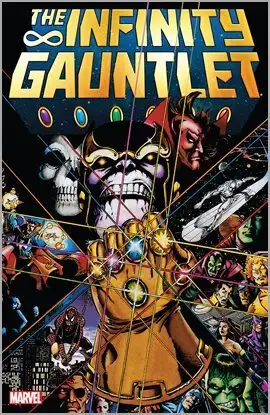
The Infinity Gauntlet
Okay, it’s as simple as this: if you loved Avengers: Infinity War and Avengers: Endgame, this is the one comic you absolutely have to read. Like the movies, Thanos acquires the Infinity Gauntlet, but things transpire much differently in the comic version (notably in Thanos’ reason for wanting to wipe out half the universe—not that either one is good). Showcasing some of Marvel’s coolest cosmic characters, like Silver Surfer and Adam Warlock (along with a superb moment between Captain America and Thanos in issue #4), The Infinity Gauntlet is a fairly accessible crossover that is a great place to start if you’re new to confusing superhero history. And if you’re a fan of detailed, beautifully rendered comic art, the fact that it is drawn by the late, great George Pérez is reason enough to pick it up. If you need more, this comic also got a couple direct sequels in the form of Infinity War, then Infinity Crusade.

House of M
Today, fans of the MCU know how powerful Wanda Maximoff is, but this wasn't truly reflected in the comics until 2005's House of M. After the tragic events of Avengers Disassembled, Wanda is imprisoned, but not before completely reshaping reality so that mutants are no longer oppressed—and in the process, turning the entire conceit of X-Men comics on its head. The interesting thing, though, is that the new world she constructs is actually better than the "real" one—but we all know it can't last. Fans of WandaVision will see a lot of common threads between that show and House of M (even though WandaVision is definitely not a one-to-one adaptation) so if you like the live-action Scarlet Witch's propensity for reality-warping weirdness, this comic is a must read.
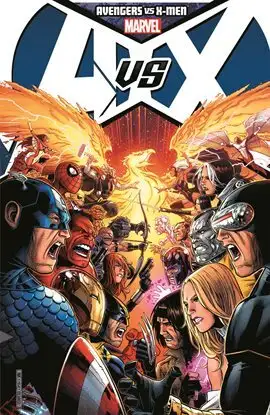
Avengers Vs. X-Men
Sure, the Avengers and X-Men had crossed paths many times before (anyone remember the mini crossover from 1993, "Bloodties"?), but why it took until the early 2010s before Marvel decided the two groups needed to have a huge, epic battle is beyond me. Remember the Phoenix Force, most famous for using the X-Men's Jean Grey as a host in the iconic "Dark Phoenix Saga" story? Well, it's returning to Earth to find a new human host, and all signs are pointing to the mysterious Hope Summers (the first mutant born since House of M, which I hope is not a spoiler). The coming of the Phoenix could have huge repercussions for the human race (the Phoenix has, after all, destroyed entire planets and absorbed whole suns before), and Marvel's two biggest teams vastly differ in how it should be dealt with. Written and drawn by a rotating cast of comics' top creators (such as Brian Michael Bendis, Ed Brubaker, Jason Aaron, and John Romita Jr.), Avengers Vs. X-Men features some matchups between fan-favorite characters as well as an ending you won't soon forget.
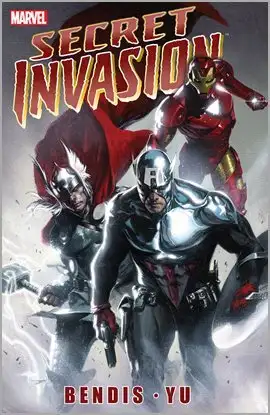
Secret Invasion
Okay, hear me out: this is not the MCU show on Disney+. It is much, much better. Of course, the Skrulls have infiltrated Earth and are posing as some of Marvel's biggest heroes (don't worry, no spoilers), but this comic exceeds the show with its greater execution, casting the Skrull invasion with an overwhelming sense of tension and paranoia. Perhaps most importantly, by the end of Secret Invasion, there is a major shift in the status quo for the Marvel Universe (again, no spoilers) that signals bleak times ahead for our heroes in the form of the Dark Reign era and ultimately the Siege event (more on that next). Also, if you loved Leinil Yu's art on Wolverine and Uncanny X-Men in the late '90s/early '00s (or his more recent X-Men work, for that matter), well, my friend, let me tell you that he draws even more major Marvel characters in Secret Invasion.
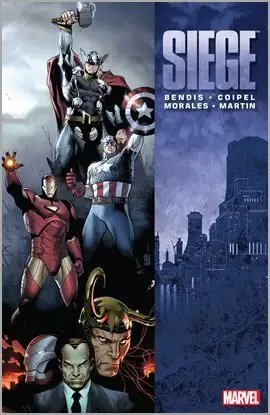
Siege
If you haven't read the previously mentioned Secret Invasion yet and don't want spoilers, skip ahead, as Siege in many ways brings the events of Secret Invasion to a conclusion—I mean, as much as anything can conclude in superhero comics. Iron Man, as director of S.H.I.E.L.D. in Nick Fury's absence, dropped the ball on stopping the Skrull invasion in the previous series, so he was replaced by Norman Osborn—the first Green Goblin and leader of the evil Thunderbolts. While Norman is a great meme, his propensity for sadism and super villainy make him less than ideal to run a major governmental agency dealing with international security, counter-terrorism, and just generally stopping big, catastrophic events—which becomes quite evident when he and the Thunderbolts (now rebranded as the Avengers) decide (or are manipulated) to use their power to invade Asgard (you know, the home to Thor, Odin, and a bunch of other really powerful gods). While Siege tends to get lost in the shuffle when discussing great crossovers, it explores some rather interesting ideas and puts a spin on some classic Marvel tropes (you may recognize Iron Patriot, as seen in Iron Man 2, but this version is definitely not our beloved Rhodey). You'll probably go into Siege having a general idea of how it's going to end, but it's still worth seeing how everything spectacularly falls apart.
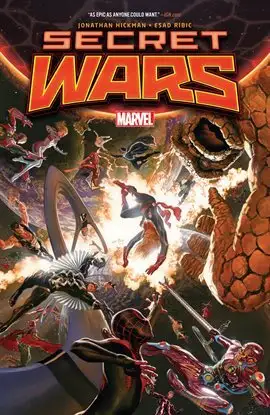
Secret Wars (2015)
Not to be confused with Secret Wars from 1984 (or Secret War from 2004 or the Secret Wars film scheduled to be released in 2027), this 2015 crossover is the culmination of a decade's worth of ideas laid out by Marvel Comics mastermind Jonathan Hickman (notably in his absolutely incredible runs on Avengers and Fantastic Four). Like the book's namesake, this Secret Wars comic is in many ways an in-universe plot device to deal with something very much in our real world (in this case, it served to simplify Marvel's multiverse—not unlike what DC did with Crisis on Infinite Earths in 1985…or the New 52 in 2011). But don't hold that against it—it's still one of the best Marvel crossover events of all time. After spending years dealing with cosmic events known as "incursions" that result in the destruction of the Earths of the multiverse, time is up for our heroes, and it turns out the only one who can save the world is…Dr. Doom? *double-checks notes* Yep, Dr. Doom. As you'd imagine, this results in some deeply concerning problems for the good guys. What sets Secret Wars above the typical crossover is that Hickman really mines the rich history of Marvel Comics while also remixing some classic ideas to very clever ends (Doom using the Thor Corps as his personal police force and The World Tree as his throne were particularly cool). There's plenty of tie-in books in you need more of this particular story, but I'd recommend the previously mentioned Avengers and Fantastic Four comics. Oh, and also, Secret Wars officially brings Miles Morales from the Ultimate Universe into the main Marvel Universe, so that's pretty neat.
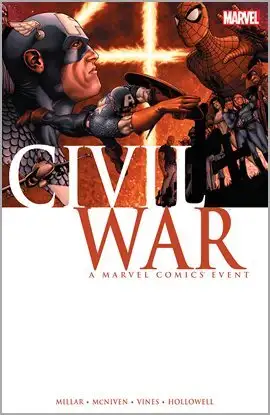
Civil War
One of the biggest and most influential Marvel crossover events, Civil War builds on the ideas of Avengers Disassembled and House of M, but is also a great starting point for new readers. Like in the Captain America movie of the same name, Civil War sees our heroes falling on opposing sides of the Superhero Registration Act, but this time, the feud is on a much larger scale. Writer Mark Millar is uncharacteristically nuanced in his depiction of the fallout between major heroes (if you've read The Ultimates and Kick-Ass, you know this had to have been difficult), to the point in which many readers, myself included, genuinely struggle to determine which side is right. Steve McNiven brings a level of detail and realism that grounds the story and gives a sense of continuity from beginning to end (although, I'm partial to his work on the Old Man Logan storyline released shortly after, also with Millar). Whether you're Team Cap or Team Iron Man, Civil War is a lot of fun, and most importantly, it's a reminder that what makes these stories great is not the big, bombastic fight scenes, but your investment in the characters and the emotions they experience. There is a Civil War II, but it's really tough to top the original.
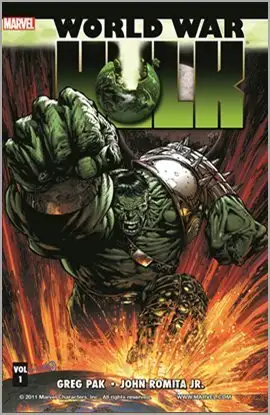
World War Hulk
One of the cleverest things to come out of early 2000s Marvel was the Illuminati, a secret society of super smart heroes (which included Iron Man, Mr. Fantastic, and Doctor Strange, among others) that banded together to help save the world—even if the means are morally questionable. One of the Illuminati’s earliest decisions was to send the Hulk to an uninhabited planet against his will, where he would presumably destroy fewer cities. Just like with every classic case of sending a giant, green monster into space, the Hulk crash lands on a mysterious planet, is forced into gladiatorial combat, overthrows an evil empire, becomes ruler of said planet, takes a new bride (who was previously trying to kill him), and has a couple superpowered kids (you may want to check out Planet Hulk by Grek Pak). When Hulk’s new life of happiness inevitably comes crashing down, he decides to return to Earth and seek revenge on those who put him there in the first place. Needless to say, things do not look good for the Illuminati. Overall, World War Hulk is a good time if you’re a Hulk fan, and it even lays the groundwork for fan-favorite, Red Hulk.
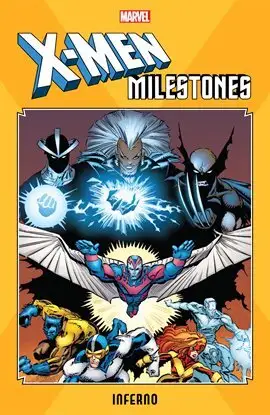
Inferno
The '80s were a great time for X-Men crossovers, with classics like the previously mentioned Mutant Massacre and Fall of the Mutants (our mutant heroes also factored heavily into the underrated, "The Evolutionary War" story arc). There's really no bad ones, so we pulled one out of a hat, and it happened to be Inferno. This comic event has everything you could possibly want out of fiction: clones, pacts with demons, and lots and lots of drama (this is the X-Men, after all). Is Cyclops' wife, Madelyne Pryor, turning evil? And why does she look so much like his ex, Jean Grey? Why is Colossus' little sister terrifying now? And what is Mr. Sinister plotting behind the scenes? Check out Inferno to see if the X-Men and their associates can make sense of all this while also juggling a demonic invasion of Manhattan. Also, make sure you're reading the most current Inferno collection, which includes the X-Terminators mini-series, featuring several fan-favorite heroes-in-training, including Leech and Artie.
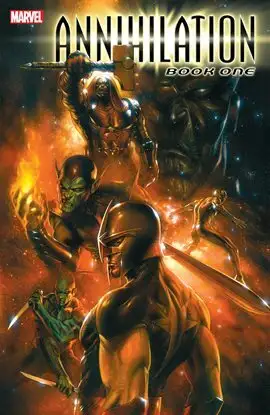
Annihilation
In 2006, while the events of Civil War were taking place on Earth, it turns out that the situation in space was not a whole lot better: Annihilus, a classic Fantastic Four villain, escaped the Negative Zone and, with the help of his massive armada (known as the Annihilation Wave) has gone on a murderous rampage across the galaxy. The cool thing about Annihilation is that it draws from the cosmic corner of Marvel's stable of heroes and lets relatively obscure characters have their time to shine (of course, some of those characters are household names today, like Drax, Star-Lord, Ronan, and Gamora). This crossover is essential reading if you love the world of the Guardians of the Galaxy films (or you wish Fantastic Four: Rise of the Silver Surfer was significantly better), since a lot of it will be very familiar. Annihilation is a grand, epic counterpoint to the more focused and grounded Civil War, but still manages to retain a lot of heart and humanity—which is to say, it is the epitome of great Marvel stories.
Top 10 Honorable Mentions:
- Schism (it’s Wolverine versus Cyclops, and the reasons for their feud may surprise you)
- Original Sin (come for “who killed The Watcher?” but stay for superhero emotional baggage)
- Spider-Verse (as the movies have proven, lots of Spideys are better than one)
- Age of Apocalypse (Professor X is dead, Magneto takes his place, and things are not good)
- Onslaught (Magneto and Xavier’s minds meld, with horrifying results)
- Mutant Massacre (the first great story told across multiple X-books, with a guest appearance by Thor)
- X-tinction Agenda (mutant slavery on the island of Genosha = bad times for the X-Men)
- Fear Itself (an Asgardian fear deity spreads, well…fear)
- Infinity (Thanos attacks Earth, but something even scarier is in space)
- A.X.E.: Judgment Day (Avengers Vs. X-Men Vs. Eternals)
Did you like this blog post? Keep up to date with all of our posts by subscribing to the Library’s newsletters!
Keep your reading list updated with our book lists. Our staff love to read and they’ll give you the scoop on new tv-series inspired titles, hobbies, educational resources, pop culture, current events, and more!
Looking for more great titles? Get personalized recommendations from our librarians with this simple form.

